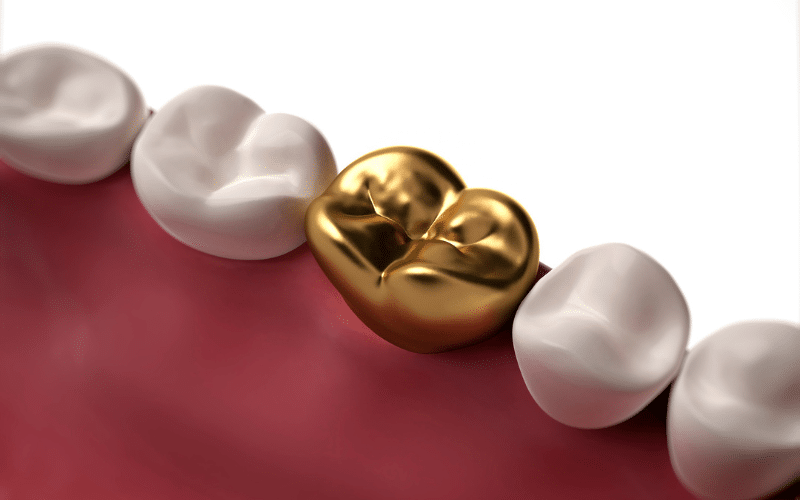One of the most prevalent dental conditions that affects people of all ages is cavities. If you have a cavity, your dentist will recommend dental fillings to restore the tooth’s function and prevent further decay. But with various filling materials available, how do you know which one is the best for your needs?
In this blog, we’ll explore the different types of cavity fillings, their benefits and drawbacks, and help you make an informed decision.
Understand Dental Fillings
Before diving into the best types of fillings, it’s essential to understand what dental fillings are and why they are necessary.
Dental fillings are materials used to fill cavities, which are the result of tooth decay. When decay occurs, the affected part of the tooth is removed, and the filling material is used to restore the tooth’s structure, function, and appearance.
Why Are They Necessary?
- Prevent Further Decay: Filling a cavity prevents bacteria from entering the tooth and causing more extensive decay.
- Restore Functionality: Fillings allow you to chew and speak normally without discomfort.
- Maintain Aesthetics: Fillings can help maintain the natural appearance of your teeth.
Types of Dental Fillings
There are several types of dental fillings, each with unique properties, advantages, and disadvantages. Here’s a closer look at the most common filling materials:
1. Amalgam Fillings
What Are They?
Amalgam fillings contain several metals, such as copper, tin, silver, and mercury. They are renowned for being robust and long-lasting.
Advantages:
- Durability: Amalgam is highly resistant to wear and can withstand heavy chewing pressure.
- Cost-Effective: They are typically less expensive than other filling materials.
- Long-Lasting: Amalgam fillings can last 10 to 15 years or longer with proper care.
Disadvantages:
- Aesthetic Concerns: Their metallic color may not blend well with natural teeth, making them less desirable for visible areas.
- Sensitivity: Some patients may experience sensitivity to temperature changes after the filling is placed.
2. Composite Resin Fillings
What Are They?
Composite resin fillings consist of tiny glass particles mixed with plastic. They are tooth-colored, making them an aesthetically pleasing option.
Advantages:
- Natural Appearance: Composite fillings can be color-matched to the natural shade of your teeth, making them less noticeable.
- Versatility: They can be used for both front and back teeth and are suitable for small to medium cavities.
- Bonding: Composite fillings bond chemically to the tooth structure, providing additional support.
Disadvantages:
- Less Durable: While composites are strong, they may not be as durable as amalgam for larger cavities or heavy chewing.
- Cost: They tend to be more expensive than amalgam fillings.
3. Ceramic Fillings
What Are They?
Ceramic fillings are made from porcelain and are designed to match the color and translucency of natural teeth.
Advantages:
- Aesthetics: Ceramic fillings offer an excellent natural appearance and can be custom-matched to your teeth.
- Stain Resistance: They are resistant to staining over time.
Disadvantages:
- Cost: Ceramic fillings are usually more expensive than both amalgam and composite fillings.
- Brittleness: While they are durable, ceramics can be more prone to chipping or cracking under heavy pressure.
4. Gold Fillings
What Are They?
Gold fillings are made from a gold alloy and are one of the most durable filling options available.
Advantages:
- Durability: Gold fillings can last more than 15 years and withstand heavy chewing forces.
- Aesthetic Appeal: They have a unique look and can be more aesthetically pleasing than amalgam for some patients.
Disadvantages:
- Cost: Gold fillings are typically the most expensive option due to the cost of materials and the labor-intensive placement process.
- Visibility: Their metallic color can be less desirable for front teeth.
5. Glass Ionomer Fillings
What Are They?
Glass and acrylic are combined to create glass ionomer fillings. They discharge fluoride, which can aid in preventing more tooth decay.
Advantages:
- Fluoride Release: The fluoride release helps to protect the tooth from future decay.
- Good Aesthetics: They can be color-matched to the tooth and are suitable for visible areas.
- Less Tooth Preparation: They require less removal of healthy tooth structure during placement.
Disadvantages:
- Durability: Glass ionomer fillings are less durable than other options, making them more suitable for small cavities.
- Wear and Tear: They may wear down more quickly than amalgam or composite fillings.
Factors To Consider While Choosing a Filling
When deciding on the best type of filling for your cavity, several factors should be considered:
- Location of the Cavity: For front teeth, aesthetic options like composite or ceramic fillings may be preferable. For back teeth, where durability is essential, amalgam or gold fillings might be better.
- Size of the Cavity: Larger cavities may benefit from more durable options like amalgam or gold, while smaller cavities can be filled with composite or glass ionomer.
- Cost: Budget considerations are important. Amalgam fillings tend to be the most cost-effective, while ceramic and gold fillings can be significantly more expensive.
- Patient’s Preference: Some patients may prioritize aesthetics over cost or durability, so discussing options with your dentist is crucial.
- Dental Health: The overall health of your teeth and gums can impact which filling material is most suitable.
Find The Best One for Your Cavity
When it comes to treating cavities, there’s no one-size-fits-all solution. The best type of filling for a cavity depends on several factors, including the location and size of the cavity, your budget, and your aesthetic preferences.
- Amalgam fillings offer strength and longevity, making them ideal for back teeth.
- Composite resin fillings provide an excellent aesthetic match for visible teeth but may not be as durable.
- Ceramic fillings offer a balance of appearance and durability but can be costly.
- Gold fillings are the gold standard for durability but come at a higher price.
- Glass ionomer fillings provide fluoride benefits but are best suited for smaller cavities.
Ultimately, it’s essential to discuss your options with your dentist, who can help you weigh the pros and cons based on your unique dental needs. By making an informed choice, you can restore your tooth’s function and appearance while ensuring long-term oral health.



